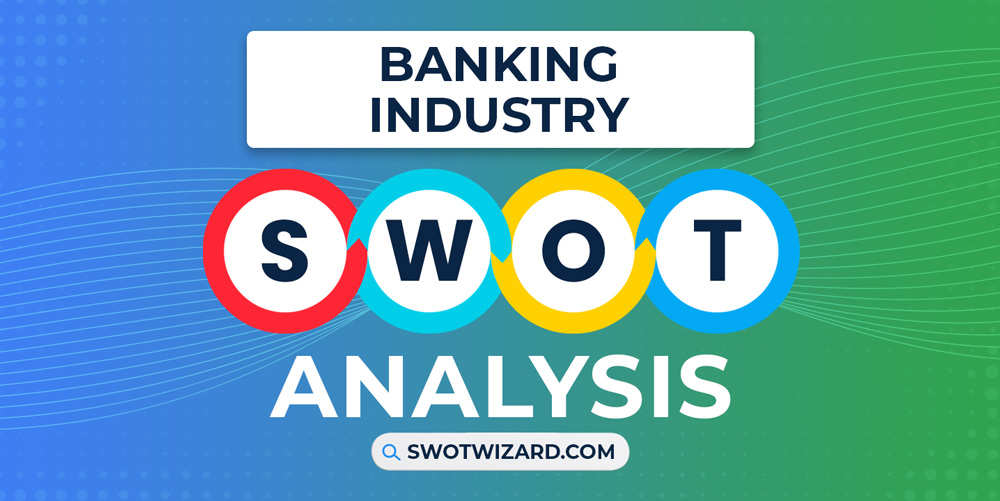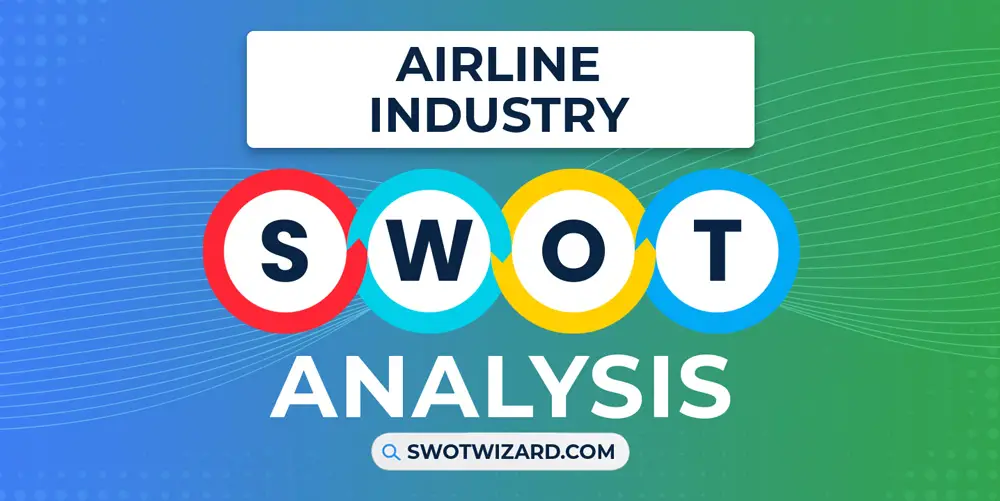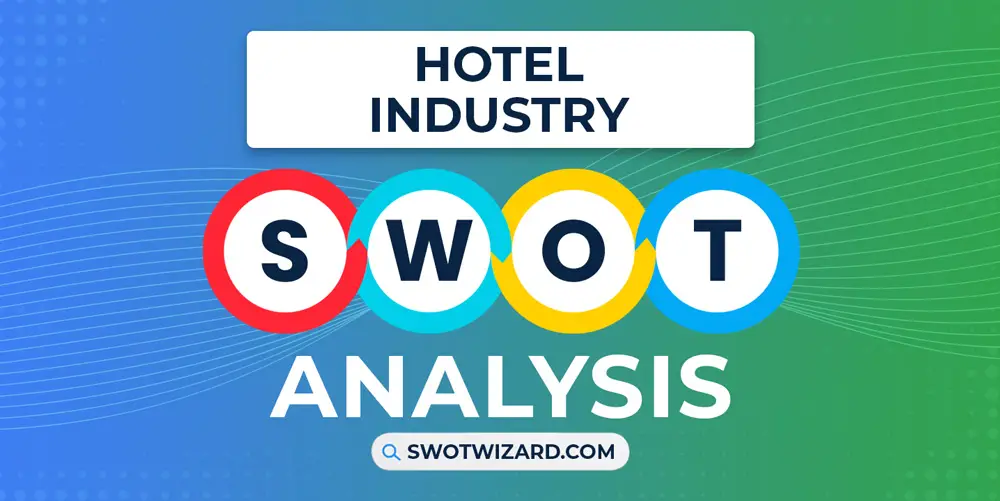The banking industry is a significant part of our life, even for the baby who is born today or someone over 100, no matter where you’re from. As the tech is going faster and smoother, so is the banking industry evolving with it, and we will get to know all about it in this banking industry SWOT analysis.
Banking Industry Overview
The banking industry traces its origins back thousands of years to early merchants and moneylenders. Modern banking took shape in the 17th century with the establishment of central banks like the Bank of England (1694) and private commercial banks.
Today, banking is a massive global industry with over $200T in total assets worldwide and participants in every country. And the sector employs well over 2M people and generates hundreds of billions in revenue annually.
Competitors in Banking Industry
JPMorgan Chase | Bank of America | Wells Fargo | HDFC Bank | HSBC | Bank of China | China Construction Bank | Morgan Stanley
Did You Know?
The world’s first ATM was installed by Barclays Bank in Enfield, London, in 1967. It dispensed £10 notes and operated only during banking hours.
Strengths – Banking Industry SWOT Analysis

Trust & Convenience: Banks provide a sense of trust and security for customers’ money that is unparalleled, not to mention rigorous regulations around capital requirements, auditing procedures, and data protections work to minimize risks and prevent fraud. As a result, reported cases of bank fraud affecting consumer deposits remain extremely low.
Diversified Offerings: Modern banks offer more seamless accessibility with diversified offerings than ever before. Between expansive ATM networks, user-friendly mobile apps with remote deposit and transfer capabilities, and streamlined online banking, customers can easily access their finances 24/7 from almost anywhere; from wealth management advice to insurance policies to auto loans and mortgages, banks cater to customers across the entire financial spectrum.
Large Customer Base: Banks benefit from an enormous aggregate customer base across both consumer and business demographics. In the USA alone, over 95% of consumers have some type of bank account, and the market penetration rates for core banking products remain high. These extensive customer touchpoints provide banks with both cross-selling opportunities as well as significant deposits to leverage for lending and financing activities.
Weaknesses – Banking Industry SWOT Analysis
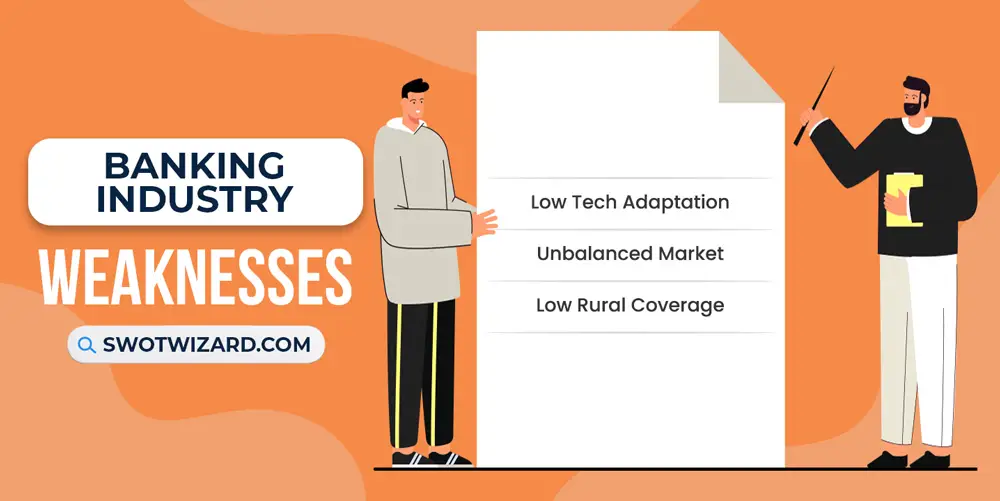
Low Tech Adaptation: While some banks have embraced new technologies, the industry as a whole has been slow to adapt and innovate. As a result, many banks still rely on legacy systems, facing obstacles in upgrading core banking infrastructure. Besides, the lag restraints their ability to leverage advances like blockchain, AI, and open banking APIs that could enhance offerings.
Unbalanced Market: We can get an overall picture of the global banking market by looking at the USA market, which is heavily concentrated in a few dominant players like Bank of America, Wells Fargo, and Chase rather than more evenly distributed. Together, the largest banks hold nearly half of national consumer deposits, limiting options for consumers in many areas while also stagnating competition and innovation in the sector.
Low Rural Coverage: While banking access remains high in middle and upper-income urban areas, fewer rural locales and economically disadvantaged communities are adequately serviced, and the scenario is the same all over the world. Expanding products into alignment with the needs of these markets represents an area requiring focus from banks.
Opportunities – Banking Industry SWOT Analysis

New Tech Utilization: Banks have substantial opportunities to leverage emerging technologies to enhance offerings and streamline infrastructure, such as blockchain-based payment networks that promise faster money transfers at lower costs, whereas cloud migration can reduce banks’ reliance on outdated legacy systems.
Area Expansion: Many banks are exploring expansion opportunities into previously underbanked customer segments and locales. As a part of the plan, targeting services to align with rural community needs or tapping into growing emerging market middle classes allows for customer base growth while providing low-fee mobile banking options specifically for lower-income regions, demonstrating a positive social impact as well.
Specialized Offerings: Developing more specialized banking solutions tailored to particular customer groups or industries also holds strong potential. Many banks are trying to do that, and as a part of the process, lines dedicated to startups, small businesses, non-profit organizations, tech companies, or the medical sector allow for building vertical expertise beyond generalized retail banking.
Threats – Banking Industry SWOT Analysis

Economic Downturns: As financial intermediaries, banks are highly exposed to macroeconomic cycles and vulnerable in times of economic contraction. Default rates, struggling small business loans, and adjustments to risk-management controls quickly impact bank profitability during recessions, as it did during the pandemic, the 2008 recession, and the current one.
Security Concerns: Banks now face escalating technological vulnerabilities, including exponentially rising fraud attempts and cybersecurity threats like malware attacks, phishing scams, and data breaches. A few studies show that financial services cyberattacks have increased by 238% since the pandemic’s onset.
Alternative Competitors: The rise of agile fintech disruptors like Robinhood, PayPal, and Square intensifies competition in bank-dominated areas like payment processing and personal money management. Unburdened by legacy overheads and able to leverage cloud infrastructure, these firms threaten disintermediation.
[Bonus Infographic] SWOT Analysis of Banking Industry
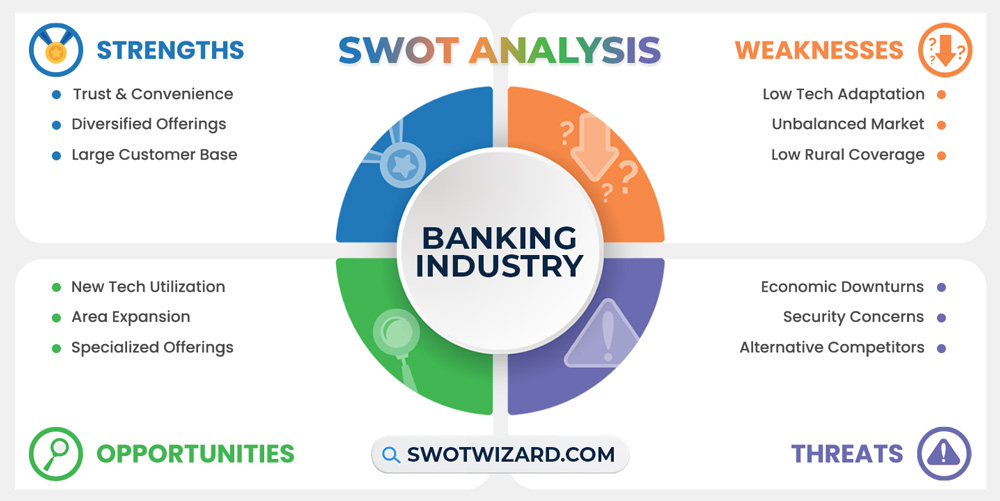
Recommendations for Banking Industry
Here are some recommendations for the overall global banking industry:
- Banks should lean into emerging technologies like cloud services, AI, and blockchain to overhaul outdated systems.
- Banks have a chance to profit with purpose by providing products tailored to disadvantaged socioeconomic demographics.
- Evolve risk management and oversight frameworks to address emerging threats like climate economic downturns, cyber fraud escalation, and global political tensions.
- Working jointly with academics, tech companies, and financial regulators through beyond-banking partnerships can spur innovative solution development.
Frequently Asked Questions (FAQs)
What is the full name of the ATM?
The full name of the ATM is Automated Teller Machine.
What are the 5 elements of banking?
The 5 elements of banking are Cash Flow, Collateral, Capital, Character, and Conditions.
Final Words on Banking Industry SWOT Analysis
While the banking industry retains core strengths like trust and regulatory oversight, the landscape is shifting quickly. Banks must actively transform legacy systems, expand access and offerings to the underbanked, and collaborate with regulators and academia to address emerging economic, technological, and social challenges. Adaptability is vital for banks to leverage opportunities from innovations and better serve diverse customer needs in a rapidly evolving financial services ecosystem.

